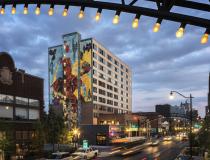Founded in 2010 originally as the Dick and Jane Project and recently rebranded as We Amplify Voices (WAV), the Columbus non-profit has been inspiring area middle school and junior high students to express themselves through music ever since. Over the past decade, WAV has been partnering students with local musicians and producers to help our future leaders amplify their creative thoughts and ideas through the art of song creation. After a process of expressive collaboration, the product—oftentimes accompanied with a music video or visual art component—is produced in a studio and released on the radio and online. This exercise has given underprivileged students the opportunity to share their ideas, feelings and experiences through the universal language of music. The impact goes far beyond music, though, encouraging kids and other ignored corners of the Columbus community to communicate and problem-solve through the workshops WAV puts on.
Currently leading the charge for WAV are Executive Director Nick D’Andrea and Director of Development Travis Hoewischer. D’Andrea is a local musician of Doc Robinson fame and is a shining example of the positive change that can happen within a community when talent meets philanthropy. Hoewischer, formerly the Editor-in-Chief of (614) Magazine, shares that same passion toward using music as a tool to inspire people to be the best version of themselves. Hoewischer has been involved with the organization from the jump but has now taken on a new leadership role that has allowed him to focus his humanitarianism toward expanding the reach and influence of WAV. Truly one of the beaming faces of Columbus, Hoewischer took the time to answer some very important questions about how WAV is impacting future generations while also showcasing the desire of Columbus artists to make the world a better place.
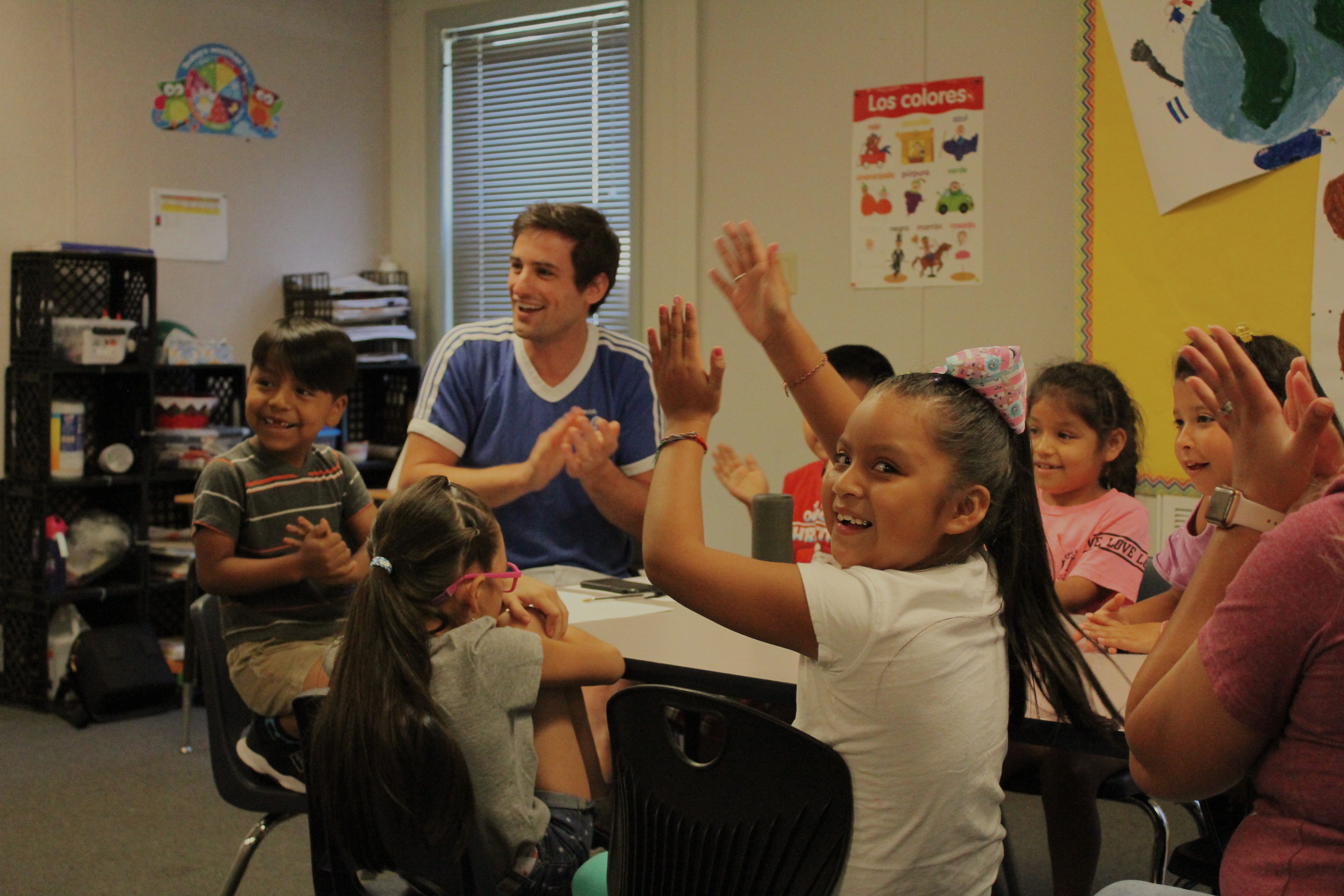 Q: What moved you to become involved with WAV and what were some of the things you admired about the Dick and Jane Project when you weren’t involved?
Q: What moved you to become involved with WAV and what were some of the things you admired about the Dick and Jane Project when you weren’t involved?
I’ve actually been involved with the organization since the very beginning. I was their first-ever Board President, and it was the first non-profit board I had ever served on. When founder Ben Shinabery asked me to join, I jumped at the chance. I thought then, and still do now, that the organization was doing something truly unique in the non-profit space, and I wanted to be a part of expanding and imagining how they could reach more kids and schools. I’ve been a writer and a performer for two decades, but there’s nothing I love more in the world than music. Raising money to help kids find their voice and approach writing in a new way, and using that money to pay the city’s talented musicians to do what they do best? It’s a dream role for me, really,
What went behind the switch to WAV and what was the origin of naming the project We Amplify Voices?
One of the first contacts I made when my position was created was to the team at Ologie, who had pitched their Brand Camp to me in my last year as the editor at (614). The program is one that Ologie offers to two non-profits each year, utilizing all of their associates to help organizations move toward the future—free of charge. It was such a novel and exciting idea and I thought we could be a perfect candidate based on the transitional time in our history. The shorter answer: the old name, while being part of our origin story (Ben used to put music to the old kids books with elementary students), it no longer did an effective job of telling people what we do. In short: it’s white, binary and doesn’t say what we do. I toyed with a lot of different names, but the word “amplify” kept coming up as the perfect verb to describe what we’re trying to do at a big picture level. We Amplify Voices came from trying to find a way to make our name almost its own tagline or mission statement. Now, I like to say it’s not just our name—it’s what we do.
 What are some of the duties that come with being the Director of Development at WAV?
What are some of the duties that come with being the Director of Development at WAV?
This is a brand-new position for the organization and my first time in such a role, so in truth, it’s still being developed, no pun intended. It’s part fund-raising, part marketing manager, part social media manager, and little pieces of many other roles. But ultimately, I am building relationships and partnerships that benefit the organization in the short- and long-term. I am the chief revenue generator, and my ultimate responsibility is to create a sustainable future for WAV. Oh, and I think I’m just generally a good hype man—but only when it’s something I truly believe in.
Music absolutely has the power to bring people from all walks of life together. It’s even more important that we’re teaching our youth this. When was the moment that you realized WAV can positively affect future generations through creating music?
There have been so many over the years. We have a former student who’s studying English in college after a workshop turned them on to writing their own poetry, and we have another who is currently finishing their own debut album. But, we’re not really trying to create future generations of songwriters as much as we are trying to create new pathways for expression, and students who are able to put their truth on record. We’re now classified as a Social and Emotional Learning Program (SEL), so when we finish a workshop, our main objective is to leave behind positive results for students in managing emotions, setting and achieving goals, embracing vulnerability, and showing empathy for their fellow classmates. We get just as excited when a student tells us that they’re more likely to socialize with their fellow classmates as we are that they are happy with their song. It’s all about how we can impact them in their lives, their classrooms, and their communities far beyond the songwriting process. To see when they realize that their emotions and experiences have value and meaning to the world—it’s everything to us.
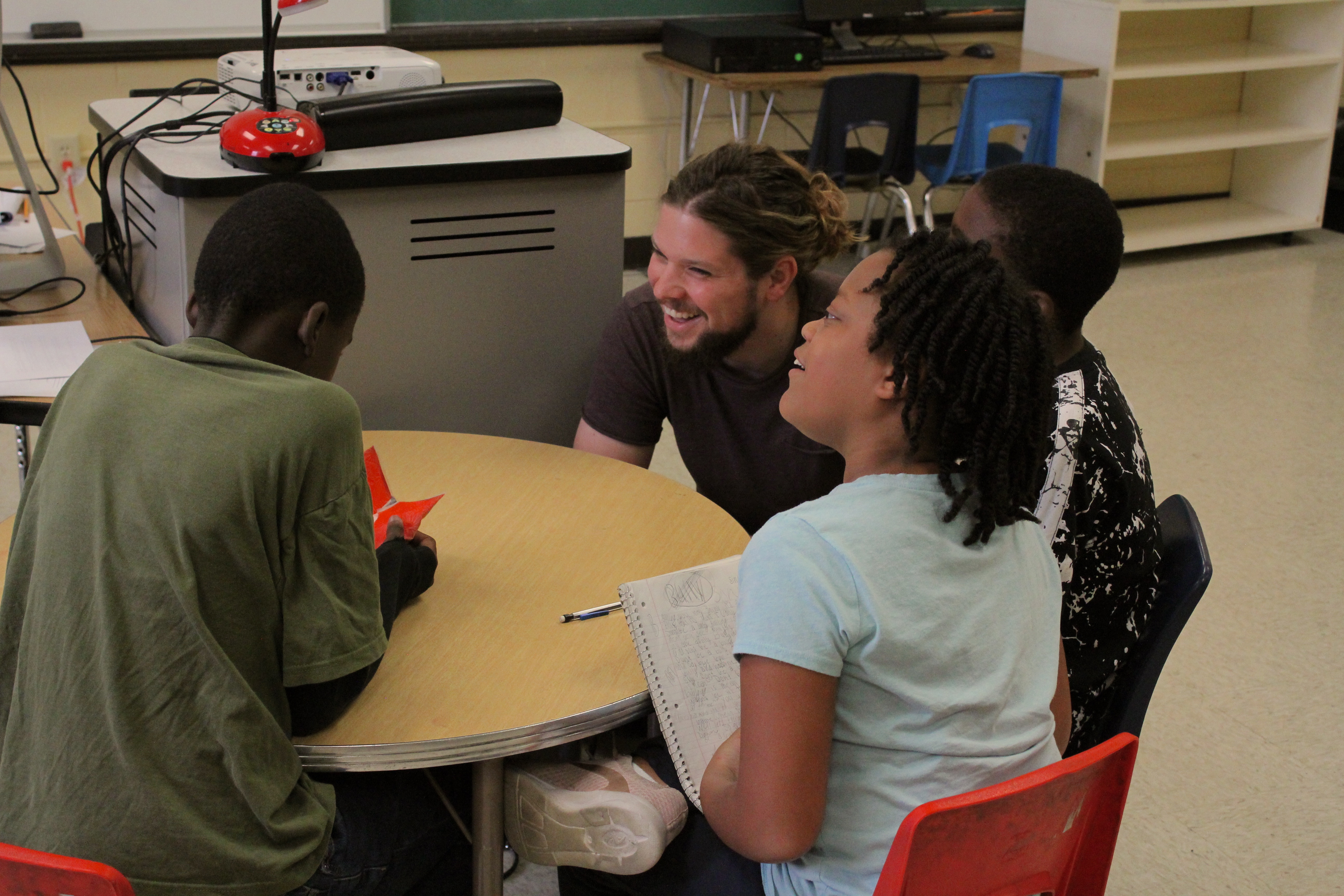 How do you think teaching an artistic skill like songwriting can translate over into solving everyday problems?
How do you think teaching an artistic skill like songwriting can translate over into solving everyday problems?
Our students work in small groups of 8-10, and not only do they have to reach a consensus on how the song will sound and what it will say, but they also have to allow room for many voices, oftentimes coming from a variety of personality types and communication styles. It’s problem-solving and communication as much as it is a creative effort. After all, advocating for your own ideas and listening to others’ feedback are both crucial skills for success in the adult world.
How do you decide what schools and which students to collaborate with?
Some schools and programs are able to fund us directly—especially now that we fit in the SEL category, but beyond that, our mission is to serve underserved communities and special-needs classrooms. Once we have chosen or partnered with a school, we allow the school to self-select their groups, so they can best determine which students would benefit from the program the most.
I’m sure there’s a lot of teaching on your end when it comes to working with these middle schoolers. What are some of the things that you’ve been able to learn from them?
I often say that people always want to help children, but what they don’t do as much is listen to what they need. Ultimately, everything we do starts with listening. As most of our students are middle school and junior high, they’re undergoing such a transitional time in their lives, and we learn so much from their perspective on the world and their place in it. One student recently said in one of our exit interviews that he learned that most of his fellow students just have a “shell,” or an exterior that they are comfortable showing to their classmates, and you have to talk to people to learn the “real them,” and what’s under that shell. We were so moved to hear that. It perfectly validated what we hope to deliver to every student in every workshop.
I found it interesting that there were many mediums, including audio and visual elements, in which a WAV song was presented to the world. When a song is created through the WAV program, how is it typically distributed?
We release every song on the radio and all digital formats, and in addition to creating music videos and visual art—new additions to our program—we’re also working on a podcast that will go much more in-depth about the song creation experience. There are so many stories and feelings from the producers, students, teachers, and administrators, that it’s imperative that we find more avenues to tell those stories to our donors and to the public.
How are the artists and producers chosen?
Our Executive Director (and also our Program Director) Nick D’Andrea has done an amazing job of training and building a diverse team of producers and musicians that bring our songs to life. Producers not only have to employ an array of skills in order to produce songs in the style our students prefer but also need to be able to carry themselves well in the classroom and with the kids. To get the most of them creatively and also manage each students’ emotions and personalities in the workshop, it takes a special dual skillset.
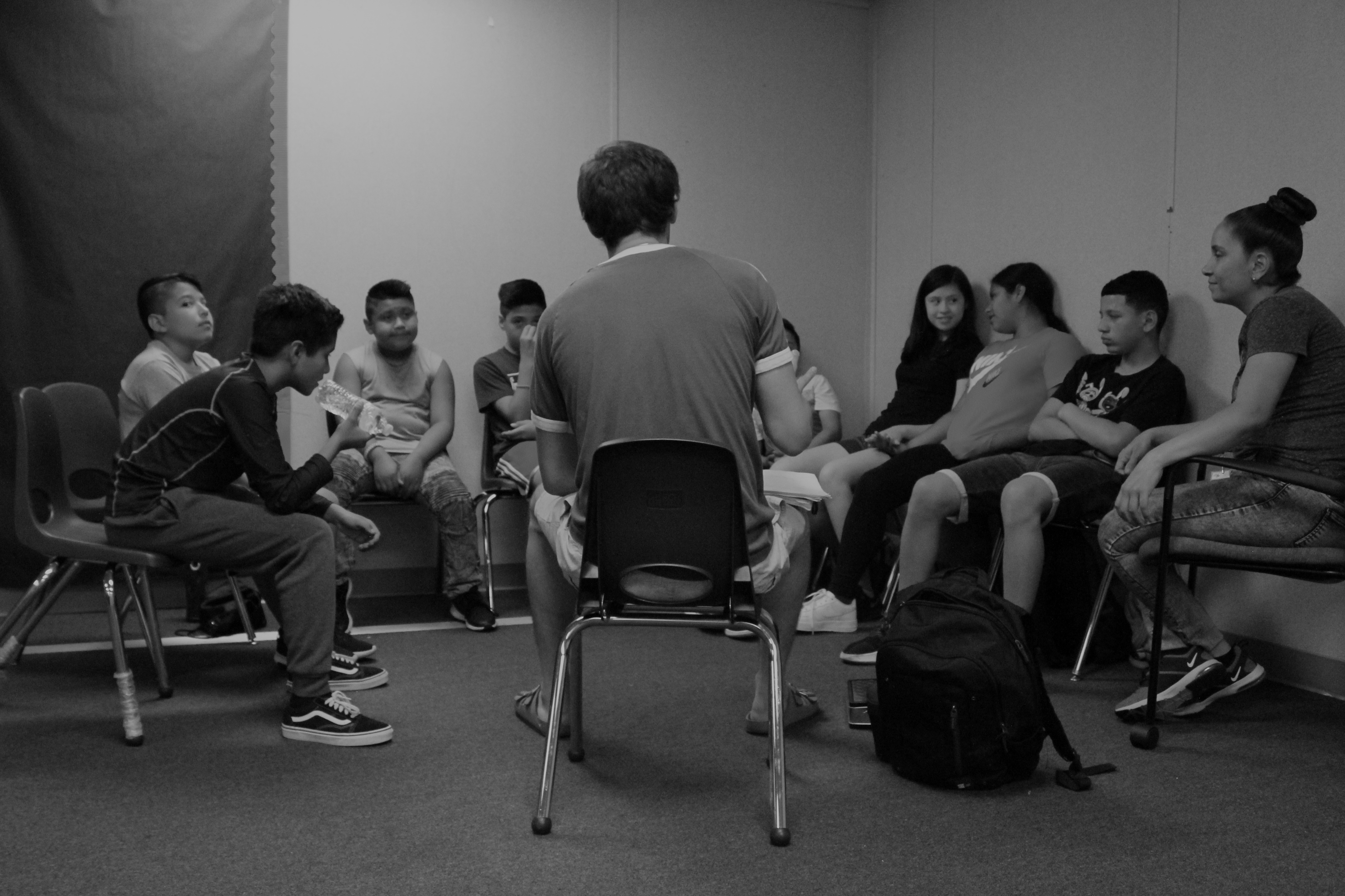 With the workshops that WAV orchestrates, what are some of the key points that you’re touching on from school to school? Can you speak more on the six-step process WAV follows to create a song?
With the workshops that WAV orchestrates, what are some of the key points that you’re touching on from school to school? Can you speak more on the six-step process WAV follows to create a song?
The easiest way to describe what we do is we simply ask our students to “show up and share.” One of the main reasons why we don’t typically have one of our students perform on a track is so each student has an equal voice, and none are intimidated by participating in the process because they are on a different footing in terms of musical skill or talent. Our writing workshop starts with a simple question: What speaks to you? Our producer gauges students’ musical tastes, and we create a playlist of our favorite songs. From there, our students hone in on a theme and work with the producer to create their lyrics. The producer turns that into a demo track, and students give feedback to shape it into more of what they want the final product to sound like. That could include wholesale tone shifts, or adding musicians and vocalists to flesh out their vision more completely. Each workshop finishes with a field trip to the studio to finish the song. The students are in control the entire time, guiding our producers toward the completed product. They will then go through an exit interview at the studio to let us know what they learned and how they felt about the experience.
I listened to a story Nick told on one of your podcasts about a student who wasn’t being vocal but then found courage through performing a song. What do you think it is about music that helps some people better express themselves?
It sounds cliche, but it’s hard not to start with music being a universal language. It transcends boundaries and translation, and to me, it’s the artform that is most prevalent in everyday life. If you sit down a stranger—student or otherwise—and ask them what they’re listening to, or a song or an album that they can associate with a memory or emotions, it’s a turn-key approach to creating safe spaces for expression and vulnerability. We don’t make mixtapes anymore, physically, but we still love the playlist as a personality profile.
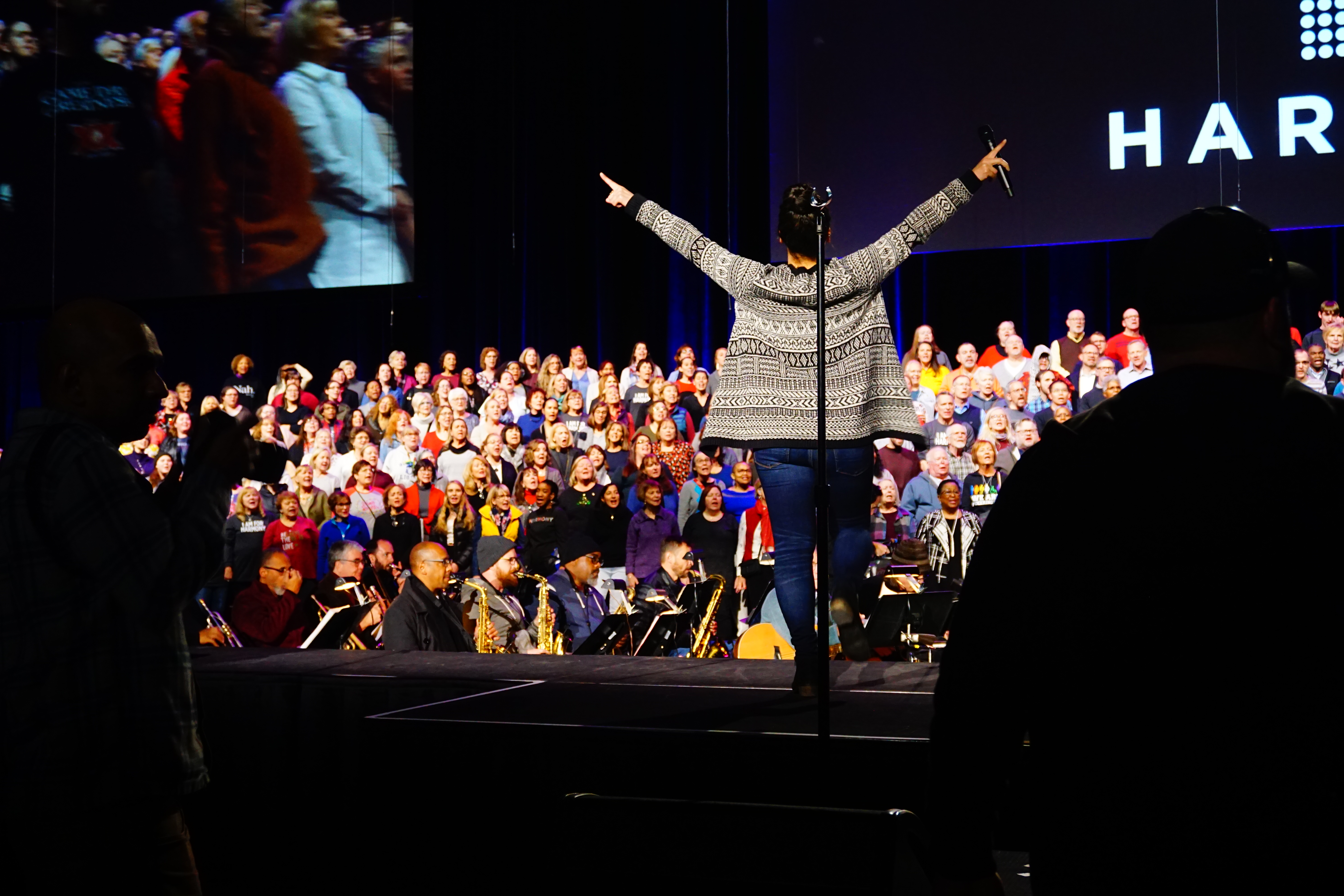 This past December the organization had a milestone moment, collaborating with the Harmony Project and Transit Arts to help write and produce a song by an effort of 500 people at Nationwide Arena. It looked like a testament to the full potential that WAV has as an organization. What particularly was special about that night?
This past December the organization had a milestone moment, collaborating with the Harmony Project and Transit Arts to help write and produce a song by an effort of 500 people at Nationwide Arena. It looked like a testament to the full potential that WAV has as an organization. What particularly was special about that night?
To be honest, that moment is still surreal for us. We obviously jumped at the chance to work under Harmony Project, who we have undying respect for, but we had no idea how much they and that program would push us creatively. Usually, we write songs with groups of 8-10 kids, and rarely are the tracks performed live. In this case, Nick and our producer team were tasked with combining the thoughts and emotions of not only 100 students, but another 400 community and choir members from all over Central Ohio. To then turn into this big, soaring anthem that could handle the heft of the choir orchestra? I was blown away. We were so proud to be on such a big stage—literally and figuratively—and it’s been the start of a growing partnership with Harmony. It was something we truly wouldn’t have imagined pulling off in such an impactful way, and it does have us stretching what we think we could do with the program in the future.
Your organization is involved with a program that works with a Columbus women’s prison. Can you speak more on that and other philanthropic things WAV does outside of producing music?
That is a direct result of our work with Harmony Project who have put a lot of passion and commitment into the community at Ohio Reformatory for Women and the Pickaway Men’s Correctional Facility. Nick and producer Kashis Keyz were so inspired that we decided to go back and start working on our own song with them right away. We are currently writing grant proposals in the hopes of writing and releasing a full album with incarcerated citizens. That’s been the true benefit of the new brand: we are realizing that there are many ways to amplify voices and there are many different underserved communities where we can make an impact. We’re just starting a workshop writing songs with the teenagers through the Homeless Families Foundation.
Who are the Columbus musicians, artists, and organizations that help make WAV a possibility?
In 10 years we’ve made more than 120 songs, and I can’t mention that without talking about the musicians that have helped build us to this point. We’ve often had the best of the best in the city creating music for our project, with artists like Counterfeit Madison, The Regrettes, Digisaurus, Trains Across the Sea, This is My Suitcase, Way Yes, Maza Blaska, Rashad, J. Rawls, and many others lending us not only talent but credibility. Glenn Davis, from Way Yes, has been and still is an integral part of our team, serving currently as our head producer. He’s such a unique musical brain and regardless of which producer is working in the school, it’s not quite a WAV song without Glenn’s touch. Our current stable includes truly some of the best musicians in the city: Sarob, Kashis Keyz, George Barrie, Amber Knicole, Honey and Blue, Parker Louis, Corey Landis, Dominique Larue, Doc Robinson, and more. And, of course, Nick has been with the organization for more than five years and has such a spectacular vision for the program. He’s very adept at vetting and integrating new producers and is a killer songwriter himself.
There seems to be a handful of ways that people can get involved with WAV. What are some ways that Columbus residents can participate in WAV?
We’re starting a new idea this year, which is to engage supporters on a monthly subscriber level through Patreon. We want people to be able to see the wealth of content we’re putting out—from podcasts to music videos—in a way that gives us some nice consistent support. Obviously, all non-profits need money, but I love talking to anyone who is into our mission, in the hopes that they’ll just pass along to the people that they know would love it, too. Again, it’s back to music as that universal language. During the summertime, you’ll see our name on a lot of events and festivals—we love our partners like Land-Grant, Wolf’s Ridge, Nightlight 614, What? Music and Arts Fest, and Taco Fest—so you could always sign up on our website and help us pour a beer or man a tent or table. It’s part of the fun of my job, getting to connect people to find ways to volunteer in the community that are fun and offer them personal value.
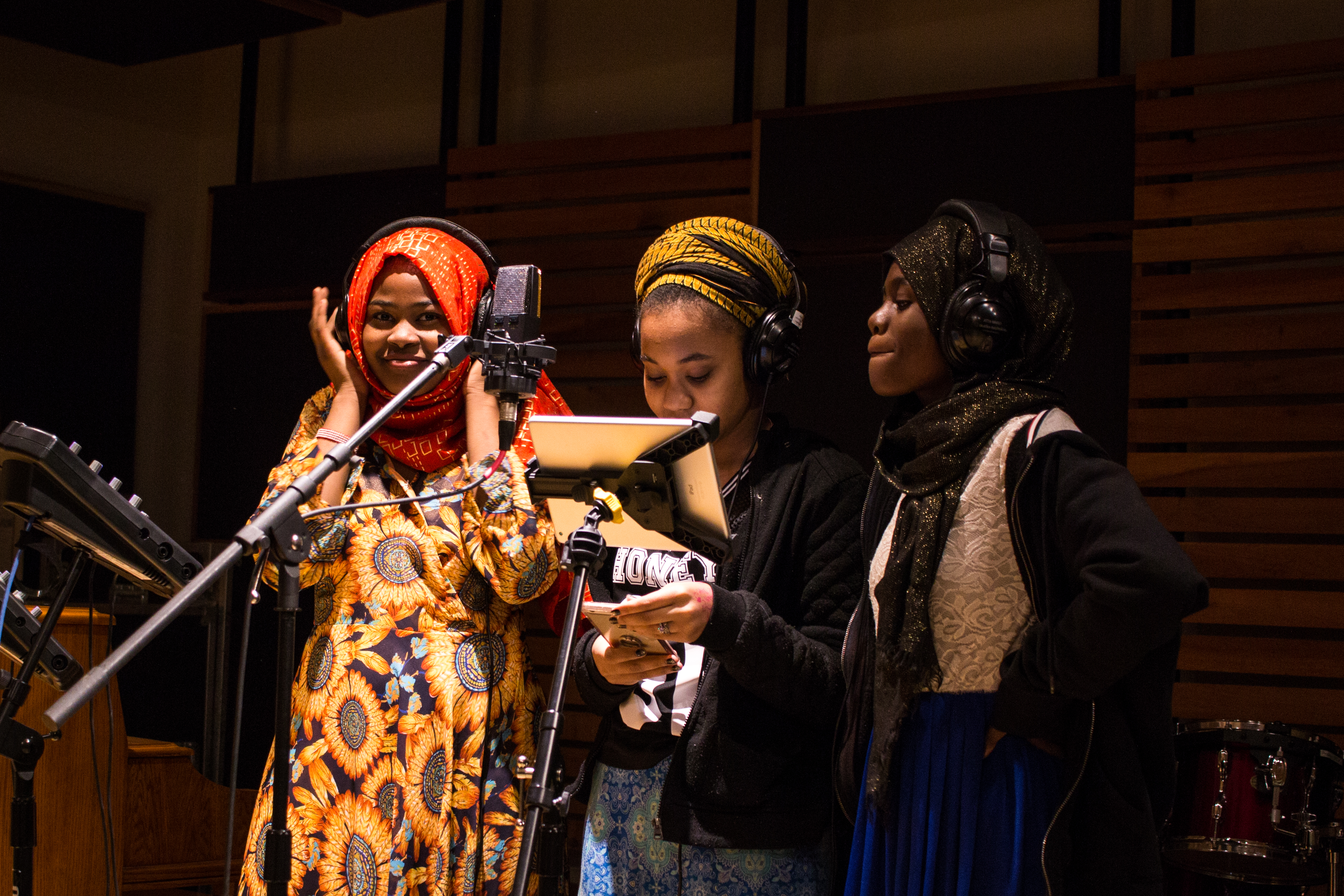 WAV is functioning as a teaching tool, showing the Columbus community that making music can change lives. Is there a particular song or songs that have had a major impact on your life?
WAV is functioning as a teaching tool, showing the Columbus community that making music can change lives. Is there a particular song or songs that have had a major impact on your life?
There’s so many to choose from. I often talk about “High Road,” a song written by Somali students at Wedgewood Middle School, as a defiant stance against anti-Muslim sentiment in the apartment complex where they all lived, just behind the school. It fills me with such hope and inspiration every time I hear it. I also love our work with students on the autism spectrum at Bridgeway Academy. “PFUDOAR” (Pink Fluffy Unicorn Dancing on a Rainbow) is just pure pop excellence, and one of our most-streamed songs, and “We’re Made of Gold” is maybe the most inventive approach we’ve ever had to a song, as they used the periodic table of elements (Gold-Titanium-Sulfur-Titanium-Carbon) to spell put the word AuTiSTiC in the chorus. Just straight genius. We also have a brand-new song that I can’t stop listening to, by Kashis Keyz and the students at Columbus Collegiate Academy in Franklinton. At the end of “Can I Be Happy?” is a raw, spoken word outro from Kashis that I can’t stop replaying:
“Adults act like they don’t understand our adolescence
c’mon get serious, you were once young, you were once misunderstood
you were once voiceless … left choiceless
in a world where I can’t make decisions about my own life,
but I’m judged on how I react to the results of it.”
It’s a collective voice trying to reach the outside world—the adult world—so they can form a better understanding of how we help the next generation. It’s a perfect crystallization of what we see the world needs and why we work for WAV every day.
—
WAV, in its 10th year, has produced more than 120 songs written by Central Ohio students. To donate or to support their Patreon, visit www.weamplifyvoices.org, or follow them at @weamplifyvoices. To get involved, you can contact Travis at travis@weamplifyvoices.org.
Portrait of Travis Hoewischer by Julian Foglietti




